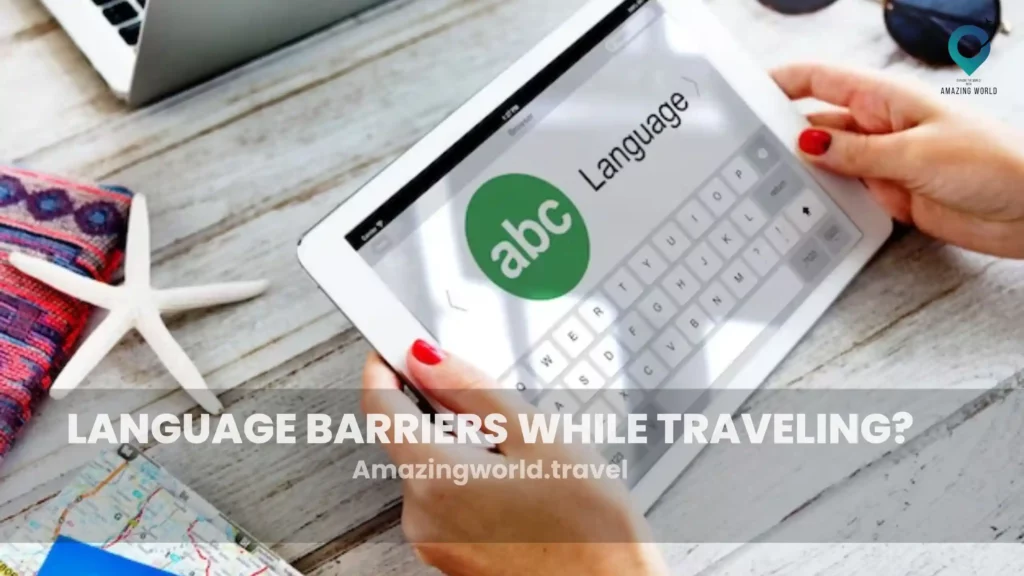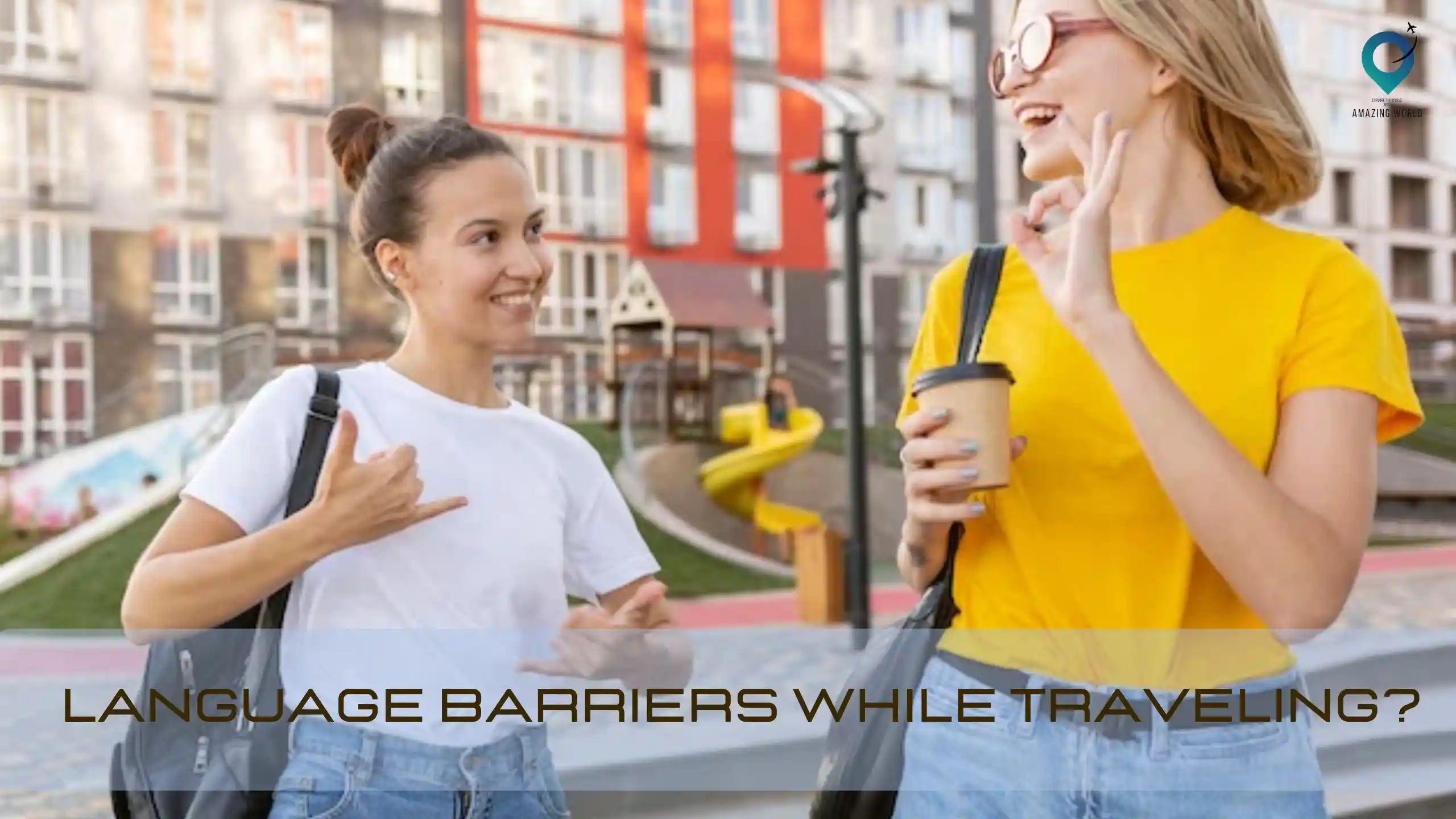How Can I Overcome Language Barriers While Traveling?
Table of Contents
Toggle
When traveling to a foreign country, one of the common challenges faced by many individuals is the language barrier. The inability to communicate effectively in the local language can lead to misunderstandings, frustration, and even missed opportunities. However, with some proactive measures and a willingness to adapt, it is possible to overcome these language barriers and enhance your travel experience.
In this post, we will explore various strategies and tips to help you overcome language barriers while traveling.
“If you are looking for the best hotel and flight deals for your next vacation, then we recommend booking your bundled flight and hotel through hotwire.com.“
Importance of Overcoming Language Barriers
Language barriers can pose significant challenges when traveling, affecting various aspects of your journey. By overcoming these barriers, you can:
- Enhance Communication: Effective communication is crucial for interacting with locals, seeking assistance, and understanding important information such as directions, transportation, and cultural practices.
- Cultural Immersion: Understanding the local language allows you to connect with the culture, traditions, and customs of the destination, enabling a deeper and more meaningful travel experience.
- Build Relationships: Breaking down language barriers can help you establish connections with locals, fostering friendships and creating memorable experiences.
Learn Basic Phrases and Greetings
One of the most effective ways to bridge the language gap is by learning a few basic phrases and greetings in the local language. Simple greetings like “hello,” “thank you,” and “goodbye” can go a long way in establishing rapport and showing respect to the locals.
Additionally, learning essential phrases such as “Where is the bathroom?” or “How much does it cost?” can help you navigate common situations with ease.
Use Translation Apps or Devices
When it comes to overcoming language barriers while traveling, one of the most convenient and effective tools at your disposal is translation apps or devices. These technological advancements have revolutionized communication by providing real-time translation capabilities.
Here are some popular apps and devices that can assist you with your language translation needs:
- Google Translate: Google Translate is a widely used translation app available for both iOS and Android devices. It offers translations for over 100 languages and provides features such as text translation, voice translation, and even image translation.
You can type or speak into the app, and it will translate your words into the desired language. It also offers offline translation for a limited set of languages, allowing you to use it even without an internet connection.
- Microsoft Translator: Microsoft Translator is another reliable translation app that offers a variety of features for travelers. It supports over 70 languages and provides text, voice, and image translation capabilities. Additionally, it offers a conversation mode that allows two or more people to have a real-time translated conversation, making it ideal for interactions with locals.
- iTranslate: iTranslate is a user-friendly translation app that offers translations for more than 100 languages. It provides a simple and intuitive interface, allowing you to type or speak your desired phrases and instantly receive translations. The app also offers offline translation for certain languages and additional features such as verb conjugation and website translation.
- Papago: Papago is a translation app developed by Naver, a popular Korean search engine. It supports translations for various languages and offers features such as text translation, voice translation, and image translation. The app is known for its accuracy and ease of use, making it a valuable tool for overcoming language barriers.
- TripLingo: TripLingo is a comprehensive travel app that not only provides translation services but also offers various other features to enhance your travel experience. In addition to text and voice translation, it includes a phrasebook with essential phrases and cultural tips. It also offers a slang dictionary, a Wi-Fi dialer for making international calls, and a feature called “Culture Crash Course” that provides insights into local customs and etiquette.
- Pocketalk: Pocketalk is a handheld translation device that is ideal for travelers who prefer a dedicated tool for language translation. It supports translations for over 70 languages and offers features such as two-way voice translation, text translation, and camera translation. The device is compact and easy to use, making it convenient for on-the-go translation needs.
When selecting a translation app or device, consider factors such as the languages you need, the user interface, offline capabilities, accuracy, and additional features that align with your specific travel requirements. It’s recommended to download and familiarize yourself with the chosen app or device before your trip to ensure a seamless translation experience.
Engage in Language Exchange
Language exchange programs provide an excellent opportunity to improve your language skills while helping others learn your native language. Platforms like Tandem, Hello Talk, and Conversation Exchange allow you to connect with native speakers who are interested in practicing your language in exchange for teaching you their language. This mutual learning experience can be both educational and rewarding.
Hire a Local Guide or Interpreter
If you’re visiting a destination where the language barrier is particularly challenging, hiring a local guide or interpreter can be highly beneficial. These individuals are fluent in both English and the local language, ensuring smooth communication and assisting you with various aspects of your trip.
A local guide can also offer valuable insights, and recommendations, and enrich your understanding of the local culture.
Non-Verbal Communication
When words fail, non-verbal communication becomes crucial. Non-verbal cues such as facial expressions, hand gestures, and body language can convey messages and emotions across language barriers.
It’s important to be mindful of cultural differences in non-verbal communication, as certain gestures or expressions may have different meanings in various cultures. Observe and learn from the locals to ensure your non-verbal communication is appropriate and well-received.
Cultural Sensitivity and Adaptability
Being culturally sensitive and adaptable is essential when overcoming language barriers. Respect and appreciate the cultural differences you encounter while traveling. Learn about local customs, traditions, and social norms, as this knowledge will guide your behavior and interactions.
Show a genuine interest in the local culture, and locals will likely reciprocate with patience and willingness to communicate.
Be Patient and Understanding
Patience is key when dealing with language barriers. Understand that miscommunication may occur, and it’s important to remain calm and composed. Be patient with yourself and the locals, as learning a new language takes time. Embrace the challenges as part of the travel experience and maintain a positive attitude throughout your journey.
Learn about Local Customs and Etiquette
When traveling to a foreign country, it’s essential to learn about the local customs and etiquette to ensure respectful and meaningful interactions with the locals. Here are some key tips on how to familiarize yourself with local customs:
- Research before your trip: Before traveling, take the time to research the customs, traditions, and social norms of the destination you’ll be visiting. Look for information on greetings, gestures, appropriate clothing, dining etiquette, and any cultural taboos that should be avoided.
- Observe and learn: Once you arrive at your destination, observe the behavior of the locals around you. Pay attention to how they greet each other, how they dress, and how they behave in public spaces. By observing and emulating their behavior, you can show respect and blend in more effectively.
- Respect personal space: Different cultures have different expectations regarding personal space. In some cultures, people may stand closer to each other during conversations, while in others, maintaining a certain distance is preferred. Observe the personal space boundaries of the locals and adjust your behavior accordingly.
- Greet respectfully: Greetings vary across cultures, so it’s important to learn the appropriate greetings for the destination you’re visiting. Whether it’s a handshake, a bow, or a simple “hello,” using the proper greeting shows respect and establishes a positive tone for your interactions.
- Dress appropriately: Clothing choices can vary significantly from one culture to another. Research the local dress code and ensure that your attire is respectful and appropriate for the destination. Dressing modestly may be expected in some cultures, especially when visiting religious sites or conservative areas.
- Be mindful of body language: Body language can convey different meanings in different cultures. Gestures that are innocuous in your own culture may be offensive or misunderstood in another. Avoid gestures that may be considered rude or inappropriate and pay attention to the body language of the locals to better understand their communication cues.
- Show respect for local traditions: Participating in local traditions and customs can be a wonderful way to engage with the culture and show respect. Whether it’s attending festivals, respecting religious practices, or observing local customs, demonstrating an interest in and appreciation for the traditions of the destination can help you connect with the locals on a deeper level.
- Use local language and phrases: Even if you don’t speak the local language fluently, learning a few basic phrases can go a long way in showing respect and making a positive impression. Simple phrases like “hello,” “thank you,” and “please” are often appreciated by locals and can help break the ice in your interactions.
- Practice good table manners: Dining etiquette can vary widely from one culture to another. Familiarize yourself with the local dining customs, such as how to use utensils, whether it’s appropriate to eat with your hands, or if it’s customary to leave a tip. By practicing good table manners, you demonstrate respect for the local culture.
- Be open-minded and adaptable: Remember that you are a guest in the destination you’re visiting. Stay open-minded, be willing to adapt your behavior, and show respect for local customs and traditions. Embrace the differences and view them as opportunities to learn and grow.
By taking the time to learn about local customs and etiquette, you not only show respect for the local culture but also enhance your travel experience by fostering positive interactions and meaningful connections with the locals.
Practice Active Listening
Active listening is a vital skill when trying to overcome language barriers. Focus on the speaker, maintain eye contact, and avoid distractions. Use your body language to show that you are engaged and interested. When you actively listen, you can pick up context clues, tone of voice, and other non-verbal cues that can aid your understanding even if you don’t comprehend every word.
Use Visual Aids or Gestures
Visual aids and gestures can be powerful tools for communication when words are insufficient. Pointing at a map, using hand gestures, or drawing simple diagrams can help convey your message. Visual aids such as pictures, symbols, or maps can assist in clarifying information or seeking directions. Just remember to be mindful of cultural appropriateness when using gestures or visual cues.
Seek Assistance from Locals
Locals are often the best resource when it comes to navigating language barriers. Don’t hesitate to approach them for help or clarification. Most people appreciate the effort of a traveler trying to communicate in their language and are willing to assist. Engage in simple conversations, ask for recommendations, or seek guidance, and you’ll likely find that locals are friendly and accommodating.
Join Language Classes or Workshops
If you frequently travel to a particular country or have a strong interest in a specific language, consider joining language classes or workshops. Immersion programs or language schools provide a structured environment to learn and practice the language. This deeper level of understanding can significantly improve your communication skills and boost your confidence when traveling.
Conclusion
Overcoming language barriers while traveling is an essential skill that enhances your travel experience, fosters connections, and promotes cultural understanding. By learning basic phrases, utilizing translation tools, engaging in language exchanges, and adapting to local customs, you can navigate foreign lands with ease and build meaningful connections along the way.
How much did you like Our detailed How Can I Overcome Language Barriers While Traveling? Review Also, please share these Blogs with your friends on social media.
Related Article –
- Best & Safest Places for Solo Female
- 20 Must Need to know Safety Tips for solo female
- Best Adventure Activities for Solo Female Travelers
- 20 Reasons Why Women Travel Solo
- 15 Tips for Solo Camping and Hiking for Women
- Traveling Abroad: How to Safe from Online Phishing & Scams
Language Barriers FAQs
Is it necessary to learn the entire local language to overcome language barriers while traveling?
No, it is not necessary to become fluent in the local language. Learning basic phrases and greetings, along with employing other communication strategies, can significantly help you overcome language barriers.
What if I make a mistake while trying to communicate in the local language?
Making mistakes is a natural part of learning and communicating in a foreign language. Locals appreciate the effort, so don’t be afraid to try. They will often be patient and understanding, and you may even learn from your mistakes.
Are translation apps reliable for overcoming language barriers?
Translation apps have improved significantly in recent years and can be reliable for basic communication needs. However, it’s essential to double-check translations and be aware of potential inaccuracies or nuances that may be lost in translation.
How can I practice active listening when I don’t understand the language?
Active listening involves focusing on the speaker’s non-verbal cues, tone, and context. Even if you don’t understand every word, paying attention to these aspects can help you comprehend the overall message.
Are there any universal gestures that can be used across different cultures?
While some gestures may have universal meanings, it’s crucial to remember that gestures can vary in different cultures. It’s best to observe and adapt to the local cultural context to avoid misunderstandings.
How can I show cultural sensitivity while interacting with locals?
Respect the local customs, traditions, and social norms. Show genuine interest, ask questions, and be open-minded. Adapting to the local culture demonstrates respect and fosters positive communication.

Meet David Hoper, a passionate travel Blog writer with 7+ years of experience in travel content. Through his exemplary storytelling and engaging narratives, he shares his experiences and brings destinations to life. With a keen eye for detail and a love for exploration, he has cultivated a diverse portfolio of travel blogs that inspire and inform readers worldwide.








